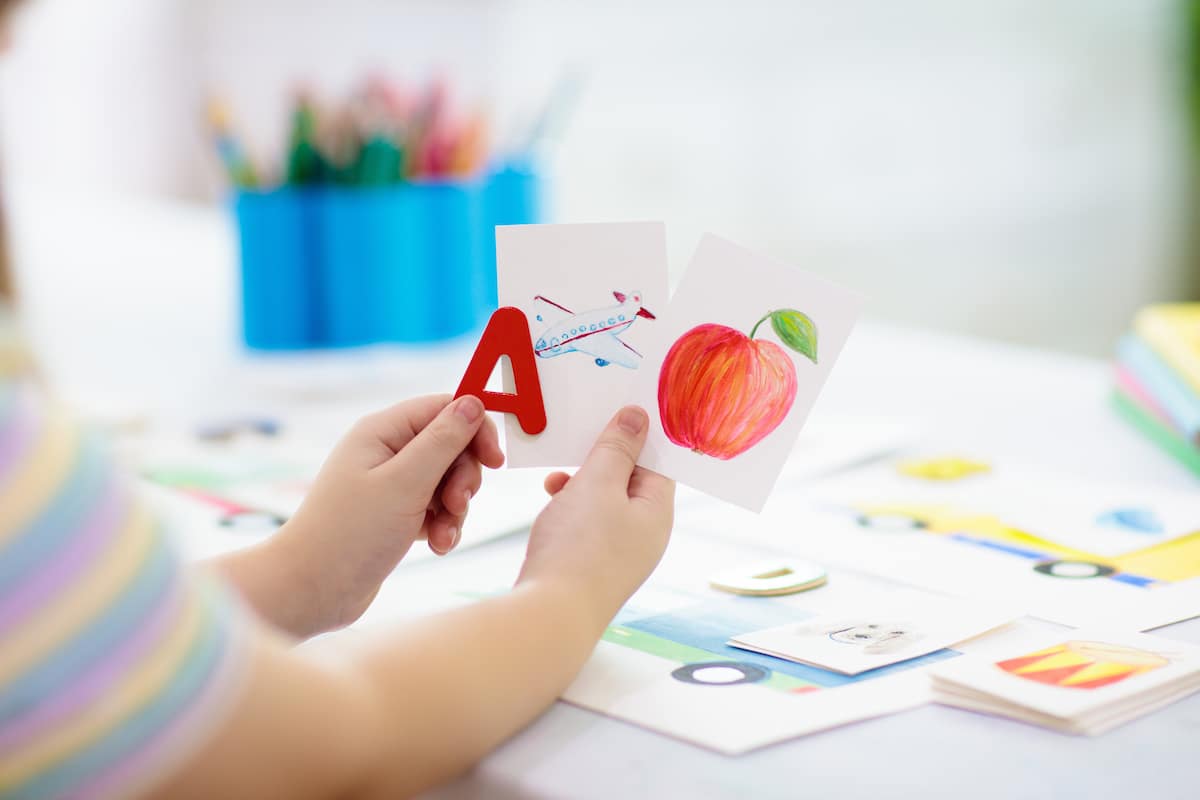I believe the best way to teach a child is to make sure they’re having too much fun to notice they’re learning.
For toddlers, playtime is learning time. I’m always looking for toddler activities that are as fun and engaging as they are educational.
I’ve compiled a list of the top 10 activities that my three-year-old not only loved doing, but that also helped him learn how to write letters and then his own name.
1. Q-Tip Paint Tracing. Use a marker to write out letters on a piece of paper. Then have your child trace over them with a Q-tip dipped in paint.
This works on the finer motor skills as they learn to handle smaller utensils but don’t quite have the strength yet to press a pencil down firmly.
2. Finger writing in sand, salt, sugar, or flour. Use a cookie sheet and pour a material on it that can be pushed around with little fingers to draw letters.
This is great for little ones who haven’t mastered holding utensils yet. Sand makes a great outdoor material. But for rainy indoor days sitting at the kitchen counter, a little flour can be a lot of fun and easy to clean up.
3. Play With Your Food! This is the easiest way to let them have fun practicing forming letters. I love it because it doesn’t require planning, set up, or clean up other than what you’d be doing for a regular snack anyway.
Many different food items can be used as an impromptu letter practicing activity. Straight items like pretzel sticks or carrots can be laid out in straight letter shapes.
Small snacks like Cheerios or Goldfish Crackers can be lined up to form anything. And soft snacks like applesauce or yogurt can be drawn in with spoons or even fingers if you’re not afraid of some mess.
4. Pipe cleaners. These are colorful, cheap, mess free, and flexible. A great option for little ones to create letters with.
For very young learners, a letter template on paper for them to lay the pipe cleaners onto can help them get the idea.
5. Paint in a ziplock bag. This one is great because all mess is completely contained and you can use vibrant colors.
The bag can be taped on the floor, on a table or counter, even on a window. Then they can draw letters by pressing and dragging their fingers along the bag. A quick rub or shake creates a fresh surface each time.
6. Play-dough. There are many ways to use this tactile material for letter shaping. You can roll out long “snakes” and use them to form letters.
Or you can roll the dough out flat and use utensils to carve letters into it or even use objects like Legos to stamp letter shapes.
7. Chalkboard Water Tracing. Write the alphabet on a chalkboard. Give your child a paint brush and a cup of water and let them trace over the letters.
8. Spray Bottle. They obviously can’t use a spray bottle to write letters, but the squeezing action helps build hand strength that will aid them in perfecting the dexterity needed to write letters with a pencil.
We use the spray bottle to clean off the shaving cream letters in the shower.
Another way to incorporate the spray bottle with letter learning is to write the alphabet in chalk on the driveway and as you call out a letter, they have to identify, run over and squirt that letter.
This is great because it combines physical activity with mental exercises, engaging the entire learner.
9. Letter Roads with Toy Cars. Create large letters with dotted lines along them to look like roads.
Then use a toy car dipped in paint to let them “drive” their cars along the letter. This is a really fun way to get them to understand the concept of tracing along shapes.
10. Shaving Cream. This has become a favorite bath time activity in our house. Simply rub some shaving cream on the tiles and let your little one use their fingers to write letters in it.
More Articles From Mama Say What?!
- Your Taste of Heaven: Salted Caramel Pretzel Bark
- The Best Homemade Bubble Recipes (Part 1)
- Discover the Best Way of Cutting a Watermelon (Like a Mama!)
- Here’s a Great Idea for a DIY Smart Phone Holder to Use in Your Car
Featured Image Credit: Shutterstock
Tim Thomas is a renowned writer and entrepreneur specializing in finance, investing, and money matters. With his extensive knowledge and experience in the financial sector, Tim offers valuable insights into the world of personal finance, stock market trends, and investment strategies.





